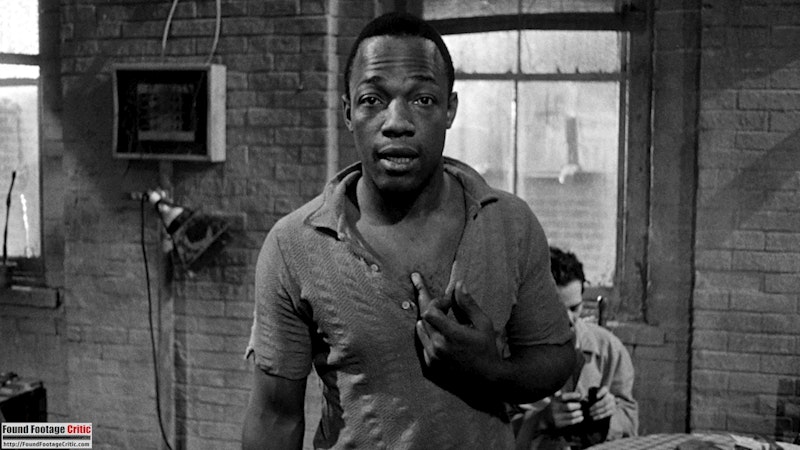Beginning with the end—that’s what makes a found footage film. An entire genre premised on one question: What happened to the filmmaker for them to abandon their work? The more an audience is manipulated into believing they’re real, the more impactful the images. There’s no better example of these key elements than 1999’s The Blair Witch Project. They played the audience with one of the earliest online viral marketing campaign ahead of its Sundance premiere. There was a website “clarifying” that this film is real, and along with fake missing persons fliers for the actors, rumors spread as the film opened around the country.
The rumor was only plausible because of the shoddy camera work. It seems like raw footage from missing student filmmakers, and the sloppiness is what makes it so eerie. Seeing the edges of an incomplete film reminds us that the person we’re watching is gone.
Although groundbreaking, Blair Witch didn’t invent found footage as a mode of filmmaking. There was an independent filmmaker in 1960s New York named Shirley Clarke. She used her first feature film, The Connection, to challenge censorship rules and disrupt filmmaking forever. The title card for The Connection establishes the found footage rule, letting the audience in on the ending: the filmmaker succumbed to the subject of his own film—heroin. The form may have been new for a 1961 audience, but the subject matter was similar to other “morality movies” of the time. With the Hays Code still in effect, propaganda films warning against the horrors of drugs and premarital sex were common; usually cheap and poorly-written, the most well-known of these today is Reefer Madness, a polemic against marijuana far more people have heard of than seen.
In The Connection, documentarian Jim Dunn and his cameraman J.J. are filming a group of heroin users waiting on their dealer, “the cowboy,” to come through with more dope. Based on a play by Jack Gelber, the found footage framing creates a kind of play-within-a-play. By default, found footage must include the filmmakers as characters, taking this adaptation far beyond the scope of any stage production of the play.
For the entire film, Jim argues that he’s “just trying to make an honest human document.” But his pleas make the opposite clear: eventually, we learn Jim’s paying the elusive “cowboy” to keep his documentary subjects high on heroin for a week, all just to shoot this one day of footage. The filmmaker’s taking an active role in his subject by paying for drugs, an obviously exploitative move.
Jim’s camera is ever-present, a character of its own as in Peeping Tom or Rear Window. “You’re interrupting my story, man,” one of the men complains as Jim messes around to get a shot. Two films are shown within The Connection: the one Jim’s making with direct-to-camera monologues with occasional jazz intermissions; and all of the damning images showing Jim’s pernicious meddling. The latter’s far more enlightening and shows just how disruptive filmmaking can be.
As work continues, the focus leaves the characters and moves to the narrative Jim is trying to create. The Connection puts the camera at the center of the drama because it wants the audience to put themselves in front of it. Solly, one of the users, airs his frustrations on Jim: “Anyone coming to Leach feels like he’s the central actor in his own drama, an artificial and melodramatic organization, but that's the set-up… the man is you, you’re the man, you’re your own connection, it starts and stops here.”
The Connection isn’t a drug-awareness film, but rather one about media literacy. Do you know what you’re watching? “There’s something dirty about peeking into people’s lives,” says Jim while pondering if he should try heroin. As Leach begins to shoot up, J.J. pans the camera to the reflection in the window of himself recording, exploiting. The filmmakers end facing the audience through another reflection, as if asking, It’s all yours now, what are you going to do with what I just gave you?

